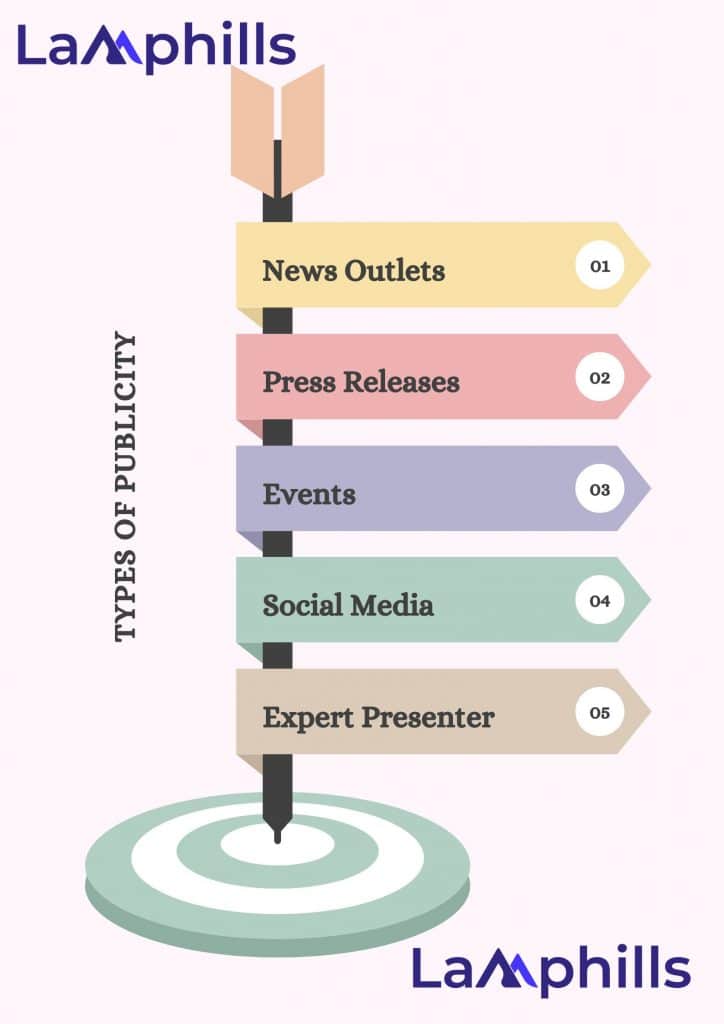This saying, “Not all press is good press,” has puzzled me for a long time, and I want to share my insight into exploring this concept with you. Let’s dive into the debate: “Not All Press Is Good Press” and “All Press Is Good Press,” exploring the impact of different types of press.
Key Points
- The phrase “all press is good press” suggests that any positive or negative publicity can be beneficial. However, this is only sometimes true, as negative publicity can have serious consequences, damaging reputations and business outcomes.
- Good press refers to favorable coverage that highlights achievements and promotes positive attributes, enhancing reputation and credibility. Bad press can harm an individual’s or organization’s image and requires strategic communication and transparency.
- Steps to manage and reverse the impact of negative media coverage include assessing the situation, responding quickly and appropriately, providing transparent and honest information, engaging with the audience, taking corrective actions, leveraging positive content, monitoring public sentiment, and building long-term trust.
- Various avenues for generating publicity include pitching to news outlets, issuing press releases, participating in events, leveraging social media, and speaking as an expert.
All Press Is Good Press

Credit: Freepik
The phrase “all press is good press” is a common saying suggesting that any publicity or media coverage, whether positive or negative, can benefit a person, brand, or organization. The idea behind this saying is that even negative attention or criticism can raise awareness and generate interest, leading to increased visibility, notoriety, or support.
However, it’s important to note that this notion is only sometimes true in practice. Negative publicity can sometimes have serious consequences, damaging reputations, relationships, and business outcomes. While some individuals or entities may be able to turn negative press to their advantage, for many others, the potential harm of negative publicity may outweigh any benefits.
Ultimately, whether “all press is good press” depends on the specific context, the nature of the coverage, and the individual or organization’s goals. Before embracing this idea, it’s essential to consider the potential impact of any positive or negative publicity.
What Is the Meaning of Good Press?
Good press” refers to favourable coverage that an individual, organization, or brand receives from media outlets. This type of press typically highlights achievements, promotes positive attributes, or portrays the subject flatteringly. Good press can enhance reputation, credibility, and public perception, increasing the covered entity’s visibility, support, and success.
How Do You Turn a Bad Press Into a Good Press?
Turning bad press into good requires strategic communication, transparency, and proactive engagement. Here are some critical steps to effectively manage and potentially reverse the impact of negative media coverage:
#1. Assess the Situation
The first step is to assess the situation by thoroughly understanding the issue and evaluating its impact on your brand or business. Gathering all relevant facts is crucial to formulating an appropriate response.
#2. Respond Quickly and Appropriately
Responding quickly and appropriately is essential. Publicly acknowledge the issue immediately to show you know and take it seriously. If the situation warrants it, offer a sincere apology and take responsibility for any mistakes. This demonstrates accountability and can help mitigate negative perceptions.
#3. Provide Clear and Honest Information
The next critical step is to provide clear and honest information. Share accurate details about what happened and the measures to address the situation. Transparency is key here; avoid spinning the situation or hiding details, which can further damage your credibility. Clear communication helps build trust and shows you are committed to resolving the issue.
#4. Engage with the Audience
Engaging with your audience is vital. Listen to feedback and address the concerns and sentiments of your audience directly. To reach a broad audience, utilize multiple channels, such as social media, press releases, and public statements. This multi-channel approach ensures that your message is widely disseminated and you engage with different audience segments.
#5. Take Corrective Actions
Taking corrective action is essential to demonstrating your commitment to resolving the issue and preventing future occurrences. Implement solutions to rectify the problem and publicize the steps taken to improve. Highlighting these improvements shows that you are actively working to make things right and enhances your credibility.
#6. Leverage Positive Content
Leveraging positive content can help shift the narrative. Share success stories and positive news related to your brand or business. Engage influencers, partners, and loyal customers to share their positive experiences and content. This can help balance the negative coverage and highlight the positive aspects of your brand.
#7. Monitor and Adjust
Monitoring public sentiment and adjusting your strategies based on ongoing feedback is crucial. Use tools to track public perception, and be prepared to adapt your communication tactics accordingly. This continuous monitoring ensures you are responsive to your audience’s concerns and can make necessary real-time adjustments.
#8. Build Long-Term Trust
Building long-term trust involves demonstrating consistency and regular engagement with your audience. Consistently show your commitment to transparency, accountability, and improvement. Maintain regular and positive engagement to reinforce trust over time. By following these steps, businesses and organizations can effectively manage and turn around lousy press, ultimately restoring and enhancing their reputation.
Why Is All Publicity Not Good Publicity?

Credit: Freepik
Let me share this with you:
Publicity’s Dark Side: Hulk Hogan’s Story
Publicity can sometimes be harmful, depending on your goals. A famous example is Hulk Hogan. He gained a lot of attention due to a sex tape scandal, but it significantly damaged his career. The issue wasn’t just the sex tape but also his use of a racial slur in the same conversation. Because of this, WWE fired him in 2015 to avoid being associated with the controversy, even though WWE’s owner, Vince McMahon, also has his scandals.
Hogan ended up in a courtroom, humorously dressed, to talk about the differences between his authentic self and his wrestling character. Backed by billionaire Peter Thiel, Hogan won the case and received $115 million in damages, causing the shutdown of Gawker, the website that published the tape. This victory was a significant event, impacting journalists and free speech advocates.
Hogan’s path to redemption took time. In 2018, he was allowed back into the WWE Hall of Fame. He sought help from friends like Ric Flair and Mike Tyson for personal recovery, while his family, who had become public figures due to their reality show, distanced themselves from him. Hogan had to work hard and spend a lot to restore his image and legacy.
More Examples of Harmful Publicity: Mario Nawfal’s Story
Negative publicity isn’t rare. Journalists sometimes write harmful articles on purpose. For instance, N.B.C. News reporter Ben Goggin falsely claimed that Mario Nawfal, a popular Twitter host, was under investigation by the F.B.I. and S.E.C. The truth was that some of Mario’s ex-employees, who had grudges against him, filed reports. Filing a report doesn’t mean there’s an investigation or wrongdoing.
Mario attracted attention from many people, including some who desperately wanted to be featured on his platform. When he refused, they manipulated Ben into writing damaging articles about him. Mario and his assistant Sulaiman fought back by holding discussions to disprove Ben’s claims. They provided evidence showing the accusations were baseless and driven by personal vendettas.
Ben did not retract his articles despite the backlash and proof against him. This incident showed how some journalists might ignore ethics when writing stories that favor their friends. The situation strengthened Mario’s position and further exposed the lack of trust in certain media outlets.
To Conclude, Hogan’s and Nawfal’s stories show that bad publicity can have serious consequences but can also be overcome with effort and strategy. Public figures often face challenges from damaging media, but transparency, legal action, and community support can help them regain their reputation. These cases also highlight issues within journalism, where personal biases can lead to unethical reporting.
Don’t let a single misstep undo years of hard work and trust-building. Take a proactive stance and partner with LampHills for expert crisis management services.Get Started Now
What Is the Difference Between Press and Publicity?
What is a Press?
“Press” is a slang term for the media, including television, newspapers, news websites like CNN, newswires, and magazines. When you aim for “press,” you want the news media to cover your story. Writing and distributing a press release is done to get this media coverage.
What is P.R.?
“Public relations” (P.R.) is often confused with “press,” but they are different. P.R. is the part of your business that manages how information about your company is spread. It includes everything from press releases to social media interactions and branding. PR aims to shape your company’s image and manage public opinion about your business.
What is Publicity?
Publicity is a type of promotion from news stories that creates an image for your business. Someone outside your company usually creates it. For example, a customer’s positive review on Facebook is publicity. You can’t control the content or where it appears, but you can use it to market your business by paying attention to and leveraging what people say about you.
In summary, When you write a press release, you want a journalist or the media to pick it up and write a story. The resulting story is publicity created by an independent source. You engage in public relations when you share this article with your audience. You’re using the article to shape your company’s image.

What Are the Types of Publicity?
There are several ways to get publicity and bring awareness to your business, including:
#1. News Outlets
Pitch to News Outlets: Reach out to news organizations and ask them to feature your business in a segment. Highlight your products and services and explain how they meet market needs or contribute to a good cause.
#2. Press Releases
Issue Press Releases: A press release is a statement you send to the media. It includes essential information about your business and any news you want the public to know.
#3. Events
Participate in Events: Organize events that align with your business values or interests. These can be charity events or local community events. When the media covers these events, they might mention your business as a participant or sponsor.
#4. Social Media
Leverage Social Media: Create profiles for your business on social media platforms. Grow your audience by posting engaging, informative, and thoughtful content. Encourage interaction by asking questions and prompting users to share your content within their networks.
#5. Expert Presenter
Speak as an Expert: Sign up to speak at conferences, participate in podcasts, or provide expert quotes for news articles. Sharing your knowledge can boost your business’s credibility and visibility.
Read: Unveiling the Power of Publicity: A Comprehensive Guide
Conclusion
Not all publicity leads to good results, even though some people say any kind of attention is good. Negative press can hurt someone’s reputation and their business. To handle lousy press, it’s essential to communicate well, be honest, and take action to fix any problems. By doing this, negative publicity can sometimes turn into something positive.
The stories of Hulk Hogan and Mario Nawfal show how tricky publicity can be and why it’s essential for journalists to be fair. Understanding this helps people and businesses deal with different types of press and keeps their reputation intact in a changing media world.
Related Posts
Media Pitch vs. Press Release: How I Differentiate Them.
Where to Send Press Release in 9 Steps (My Expert Tips)
How to Write a Good Restaurant Press Release (My Templates)






